Is There a Difference Between Natural and Laboratory-Grown Diamonds?
May 31, 2019
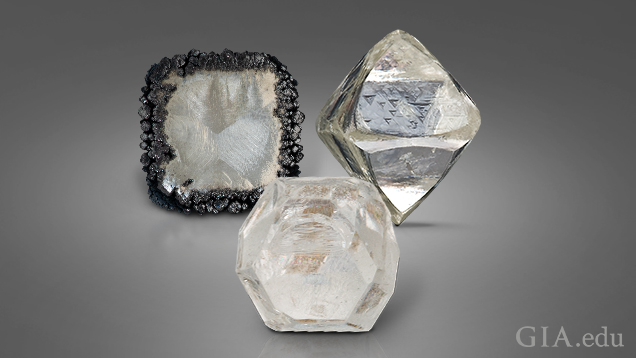
Two specimens of faceted crystalized carbon - both are crystal clear and give off a kaleidoscope of spectral colors in direct light. They appear to be identical. One, however, is a billion or more years old and the other was recently grown in a laboratory.
Both are diamonds, of course. The first is a natural diamond created by forces deep within the young Earth. The second is from a laboratory and possesses essentially the same chemical, physical and optical properties as its natural counterpart.
Diamond – the material, not the gem – is a mineral consisting of “essentially pure carbon crystalized in the isometric cubic system,” according to the U.S. Federal Trade Commission (FTC), which develops trading guides for the gem and jewelry industry.
Although the FTC says diamonds are essentially pure carbon, the vast majority of natural diamonds contain trace amounts of other substances, particularly nitrogen, which gives them a yellow color or (rarely) boron, which imparts a blue color. In addition, they usually contain inclusions, tiny bits of foreign material that were trapped in the still-forming diamond millions of years ago.
Laboratory-grown diamonds (also sometimes referred to as man-made or synthetic diamonds) entered the gem and jewelry market in commercial quantities about five years ago. Although identical in appearance to natural diamonds, they have very subtle differences that can only be detected by trained gemologists and sophisticated equipment designed for that purpose.
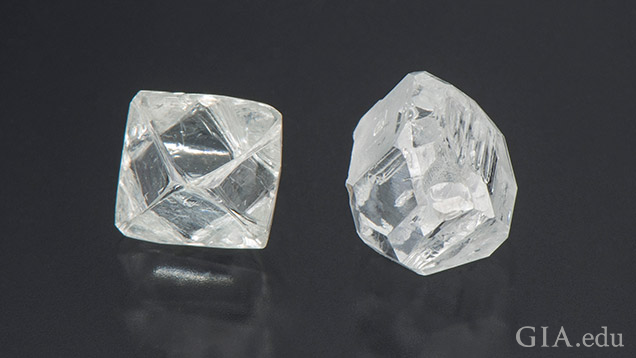
WHERE DO DIAMONDS COME FROM?
Natural Diamonds
Natural diamonds formed deep in the earth under extreme pressure and high temperature as long as three billion years ago. Volcanic activity brought them to the surface where they lay in a type of volcanic rock formation known as kimberlite pipes, waiting to be mined. Only about five percent of kimberlite pipes contain enough diamond to make them economically feasible to mine.
Laboratory-Grown Diamonds
Man-made diamonds suitable for industrial use were first produced in a laboratory in the 1950s. While gem-quality diamonds were produced in a laboratory for the first time in 1971, it was not until the mid-2010s that colorless laboratory-grown diamonds entered the gem and jewelry market in commercial quantities.
Today, laboratory-grown diamonds are created by two methods, according to Dr. James Shigley, GIA Distinguished Research Fellow, who has been researching laboratory-grown diamonds at GIA for more than 30 years.
High pressure, high temperature (HPHT) diamonds are produced in a laboratory by mimicking the high pressure, high temperature conditions that form natural diamonds in the Earth. This process produces a distinctively shaped laboratory-grown diamond crystal.
The chemical vapor deposition (CVD) method involves breaking down the molecules of a carbon-rich gas, such as methane, into carbon and hydrogen atoms, which then are deposited on diamond seeds to produce a square-shaped, tabular diamond crystal.
Growing diamonds by either method typically requires less than a month for most sizes. Most CVD-grown diamonds require additional treatments like heat or irradiation to enhance or change their colors after the growth process.
Typically, laboratory-grown diamonds have weighed a carat or less, but as technology and techniques improve, larger stones have appeared in the market.
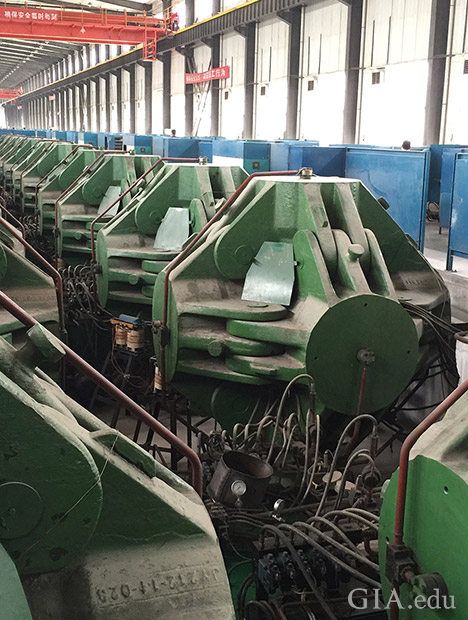
HOW CAN NATURAL AND LABORATORY-GROWN DIAMONDS BE DISTINGUISHED FROM ONE ANOTHER?
It is essential that laboratory-grown diamonds can be identified because consumers need to know what they are buying, and because there are often significant price differences between them and natural gemstones.
As part of its mission to protect and inform the gem-buying public, GIA offers diploma programs, including the GIA Graduate Gemologist credential, and seminars that teach diamond grading techniques and the latest methods used to distinguish natural from laboratory-grown diamonds and diamond simulants.
Because laboratory-grown diamonds are essentially chemically and optically the same as their natural counterparts, traditional gemological observations and old-style “diamond detectors” are not able to tell them apart. Identification at a professional gemological laboratory or using sophisticated devices developed by GIA and other organizations are the only reliable methods to separate them from natural diamonds.
Diamond Morphology – the Telltale Factor
“Natural diamonds that formed in the Earth over millions of years grow differently from diamonds created in a laboratory in a few weeks. In addition, HPHT- and CVD-created diamonds have different growth morphology, or how growth conditions influenced the shape of the diamond crystal,” said Dr. Shigley.
GIA Senior Research Scientist Dr. Sally Eaton-Magaña further explained, “The identification criteria for HPHT and CVD diamonds are quite distinct from each other,” adding that laboratory-grown diamonds have become much more varied over the last 10 to 15 years, requiring GIA researchers to keep pace with new developments.
“We also regularly conduct research on emerging products and GIA has a program to grow diamonds in the laboratory to stay ahead of any new trends,” Dr. Eaton-Magaña said.
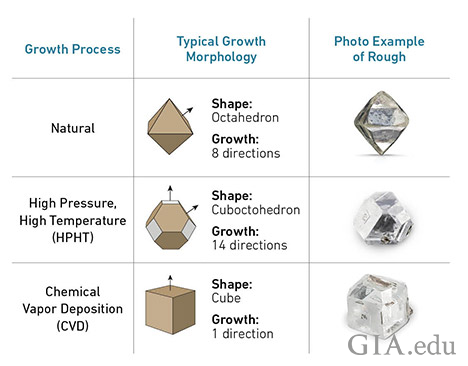
DOES GIA OFFER GRADING FOR LABORATORY-GROWN DIAMONDS?
GIA tests every diamond submitted to its gemstone grading and identification laboratory locations around the world to determine whether they are natural or laboratory-grown.
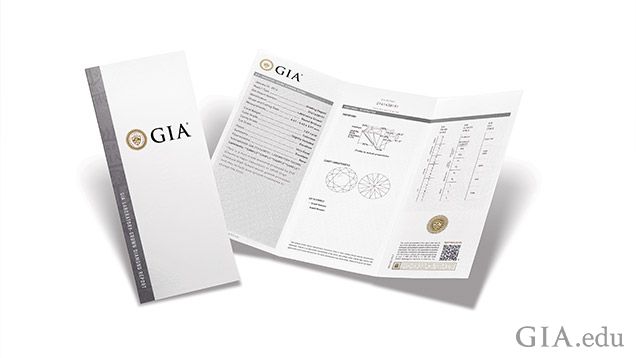
GIA has issued reports for laboratory-grown diamonds for more than 10 years. In March 2019, following the guidelines from the FTC, the Institute announced it will change the name of the reports to GIA Laboratory-Grown Diamond Reports starting in July 2019. To reduce the potential for confusion, GIA grading reports for laboratory-grown diamonds look significantly different from those for natural diamonds. In addition, the terms used to report color and clarity grades for laboratory-grown diamonds are different from those used for natural diamonds. Instead of D-to-Z color grades, broader category terms (Colorless, Near-Colorless, Faint, Very Light and Light) are used. Clarity grades, which are abbreviated on natural diamond reports (VVS1, SI2, etc.), use broader descriptive category terms (i.e., Very Very Slightly Included, Slightly Included) on the reports for laboratory-grown diamonds.
WHAT ABOUT DIAMONDS THAT ARE NOT SUBMITTED TO GEM LABS FOR GRADING?
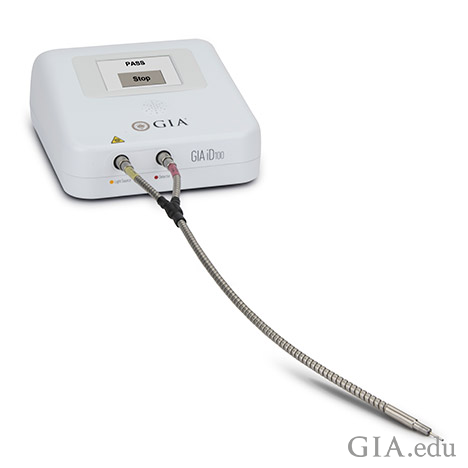
To identify laboratory-grown diamonds, GIA developed the GIA iD100® screening device. This desktop-sized instrument combines advanced spectroscopic technology with GIA’s 60 years of diamond and gemstone identification research to distinguish natural diamonds from laboratory-grown (HPHT and CVD) diamonds and diamond simulants.
GIA also offers the GIA Melee Analysis Service, which quickly and accurately screens parcels of very small diamonds – the most prevalent in the market.
Russell Shor is senior industry analyst at GIA in Carlsbad.
.jpg)


